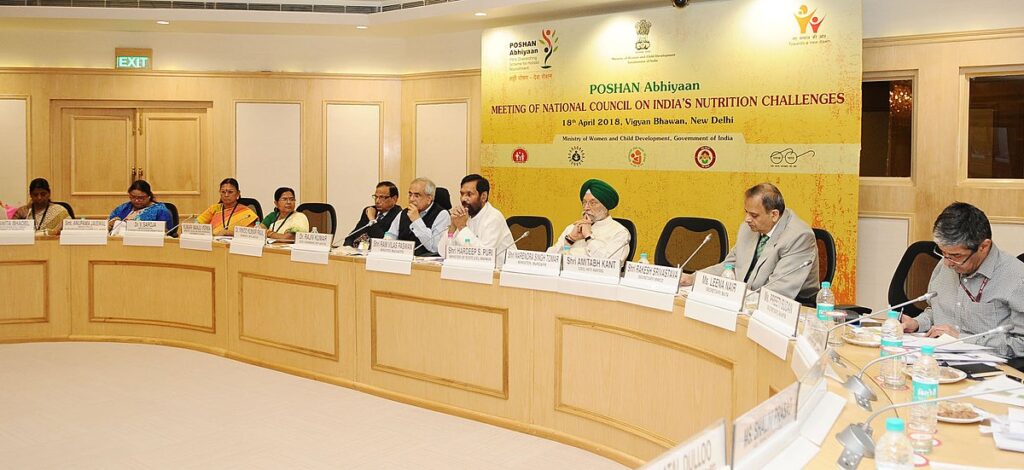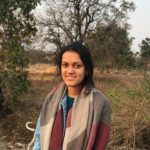In this article, Ananya Vyas points to the chronic malnutrition of women in India, and how various stakeholders like women’s groups, the government through ASHA workers and various food security schemes, etc are engaging to tackle this issue and the possible way forward in tackling this issue, especially with regard to the government policies.
Food grain production in India crossed 260 million tonnes during 2012-14. Despite this increase, 190.7 million persons living in rural areas, or 15.2% of the country’s total population, remained chronically undernourished. In spite of agriculture being the predominant livelihood for 70% of India’s rural population, rural household diets suggest that while agricultural growth has contributed to increased calorie intake, there has been a minimal effect on the intake of protein and micronutrients.
Micronutrient deficiencies have been a serious public health problem among women of reproductive age in low and middle-income countries, including India. These adversely affect maternal and child health. The latest Global Nutrition Report highlighted that 48% of Indian rural women in the reproductive age group are anaemic. In the National Family Health Survey (NFHS-4), this number stood higher, at 54%. The NFHS-4 also reported that among rural children under the age of 5, 41% are stunted, 21% are wasted and 38% are underweight. According to the World Health Organisation, malnutrition is directly or indirectly linked to major causes of death and disability worldwide. Diets in many rural parts of India are often of poor quality, carbohydrate-based, and lack micro-nutrient rich foods. Micronutrient intakes are usually inadequate when access to a diverse and high-quality diet is limited. This crisis of under and malnutrition has been further amplified in the COVID-19 pandemic due to incomes, food consumption and essential services coming under pressure.
The issue of poor nutritional outcomes is particularly heightened among rural Indian women, owing to the concatenation of multiple social, cultural and economic factors. Some such factors identified by previous studies are: women’s isolation from their own families; an inability to relax in their in-law’s homes and eat adequately (women are the last to eat in several households); high and unequally distributed workload (due to occupational gender stereotypes wherein men do not do household work); a lack of financial autonomy; regular fasting; unavailability and unaffordability of fresh fruits and vegetables; women having few decision-making powers and low status within the households, etc.
These factors reveal that women’s nutrition in India is not an isolated issue. Several socio-economic factors, religious and cultural norms entrenched in patriarchal or caste-based systems contribute to women’s undernutrition in India. Targeting this issue, therefore, cannot come through a single remedy. It must entail a holistic approach that addresses these multiple, interconnected facets.
Previous programmes geared towards women’s empowerment have proven to be beneficial in improving nutrition outcomes in rural areas. Empowering women can make them more confident, skilled and economically independent, and allow them to drive improvements in nutrition in their households and villages. One such empowerment programme – Tejaswini – was funded by the International Fund for Agricultural Development (IFAD) wherein groups of active village women including Self Help Group members, health and social workers teamed up with men in the community to raise awareness on domestic violence, education, child marriage or family and health concerns. Not only did this give women the freedom to go out and speak unveiled, but they also commanded greater respect in decisions made by the family, and drove improvements in family nutrition by diversifying diets and eating indigenous crops.
Another such programme, funded by the Bestseller Foundation and run by the Global Alliance for Improved Nutrition (GAIN), is working in Karnataka and Bihar to improve the nutrition and lives of semi-literate women. These women are trained to run their own factories and produce a blended complementary food product, fortified with essential minerals and vitamins. The programme has been integrated into the states’ respective institutional programmes – the Integrated Child Development Services scheme in Bihar, and the Multi-sectoral Nutrition Project in Karnataka.
Both these examples highlight the promise held by programmes engaging women and women’s groups to address undernutrition. This could be a useful approach in cutting through India’s complex political landscape and driving social change to address nutritional challenges from the ground-up. The landscape of women’s groups in India encompasses autonomous member-based and social solidarity organisations, community mobilisation initiatives and micro-finance and livelihood groups such as Self-Help Groups (SHGs). SHGs currently reach over 50 million households and hold much potential for scalable change.

Government programmes support Women’s Groups in two ways to improve health and nutrition outcomes. The first is through the National Health Mission that supports women’s groups to engage in cycles of participatory learning and action to improve maternal health facilitated by Accredited Social Health Activists (ASHAs). The second is the National Rural Livelihoods Mission which introduced information and education on food, nutrition and water, sanitation and hygiene into SHG meetings. Additionally, government schemes from recent years, such as the Prime Minister’s Overarching Scheme for Holistic Nourishment (POSHAN) Abhiyaan, also seek to address undernutrition in rural women. This scheme focuses on the 1000 days between a mother’s pregnancy and her child’s second birthday.

Beyond the government, multilateral organisations such as the WHO have issued recommendations to promote community mobilisation through participatory learning and action with women’s groups as a cost-effective strategy to improve maternal and new-born health. Organisations and institutions such as the Bill & Melinda Gates Foundation, the World Bank and UNICEF have also thrown their weight behind working with SHGs to improve nutrition outcomes.
Previously, interventions that have reported improvements in self-reported dietary diversity or breastfeeding via women’s groups have been those that employed participatory learning and action to build community capabilities to address nutrition at a population level. These reported improvements in maternal and child dietary diversity and behaviours linked to the prevention of childhood illnesses. Additionally, interventions that provided nutrition information to SHG members consistently reported improvements in self-reported dietary diversity or breastfeeding. One of these found a 27% reduction in child wasting over three years from an intervention that combined participatory learning and action cycles with women’s groups, home visits and, critically, creches for children under three years.
It is important to note however, that interventions through women’s groups alone are not enough to create and sustain substantial improvements in women’s nutrition. Using such interventions can be effective at scale and as part of wider strategies geared towards improving rural nutrition. Certain suggestions have added more nuance to the potential of women’s groups in alleviating undernutrition by recommending the development of community and individual-specific pedagogy in designing interventions. Recommendations have also emphasised the value of interactive and participatory methods to effectively engage group members in active learning and agenda-setting and identifying problems and solutions.
Given the interconnected socio-cultural aspects that affect women’s position in their households and communities, interventions need to take place at multiple levels. At the household level, it is important to raise awareness to change attitudes among family members to ensure women are adequately nourished and rested. At the community level, tackling conceptions about indigenous green leafy vegetables is important to encourage consumption. Interventions focusing on schools can allow children and youth to be educated about the value of indigenous crops along with addressing social norms related to gender imbalances in workload and food distribution within households.
Additionally, Anganwadi Centres (that are central to the Indian public health-care system, especially in rural India) and Workers could act as facilitators to finding solutions within households to the challenges of workload and time pressures on women. The majority of India’s smallholder plots are tended by women farmers. Investing in their empowerment and in nutrition-sensitive agricultural programmes can help women and their communities live healthier, more prosperous lives.
In addition to addressing the demand side of the situation that focuses on individual and behaviour change, interventions are also needed to ensure the supply of relevant services. Supplying economic groups with livestock or food credit, providing children food in creches, setting up and bolstering an effective health system, making available supplementary nutrition services alongside the provision of affordable and nutritious foods etc. are various interrelated interventions that can substantially improve women’s nutrition.
Improving nutrition calls for a systems approach, cutting across health, food and care systems. Schemes such as the POSHAN Abhiyaan also emphasise the importance of a data-driven approach to plan and manage delivery of nutrition services, particularly through Anganwadi workers (AWWs). Government support needs to take an interdisciplinary approach by encouraging discussion between relevant Government Ministries of Agriculture, Health, Women and Child Development, Education, coupled with data-backed digital tools that provide an enabling backbone to scale evidence-based demand and supply-side interventions.
Ananya Vyas is a third year at Ashoka University, majoring in Political Science and minoring in Environmental Studies.



What’s up to every body, it’s my first pay a visit of this blog; this
weblog contains amazing and actually good stuff in favor of visitors.